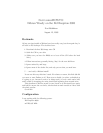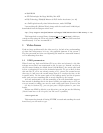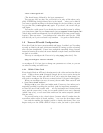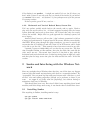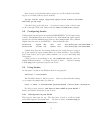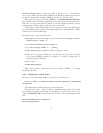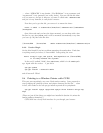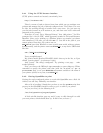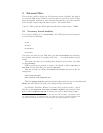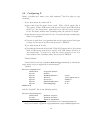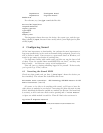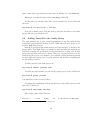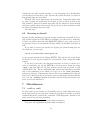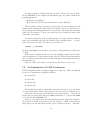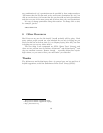
configured your shell, window manager, or any programs you’ve downloaded,
your settings are saved there; /etc, because the system files that you spent so
long getting right are saved there.
The first time, I just plain forgot; the second time, I purposely didn’t back
up /etc, because the system files I’d screwed up were in there, as well as the
ones I wanted. Turns out I should have taken the five minutes to weed through
which were which, and to back up only the good ones, as that would have saved
me hours of headache down the road.
Live and learn.
6.2 Rescuing an Install
Instead of totally trashing your system, though, and having to reinstall, if you’ve
only screwed up part of it (like LILO, for example), you can rescue it. Ironically,
I’d only ever before done this with KNOPPIX (which is great, that’s just not
its purpose)! Turns out the Debian CD from which you installed works just as
well.
If you want to rescue your install, but bypass your kernel loading and use
the stock one, you can type:
rescue root=/dev/hdaX video=vga16:off
at the prompt instead of just hitting ENTER. This will use the stock kernel
on the disc to boot up your install, if it’s rescue-able. (Don’t forget the video
option!)
If you don’t even want your filesystem mounted (in order to convert it to
ext3, or something) you can hit ENTER at the first screen (loads the image
‘linux’), and then when the big blue welcome screen pops up, switch to tty2
(CTRL+ALT+F2). This is a small shell, ash, without any big editors, and with
only a few commands (to see which, as it says, do a ‘ls /sbin /usr/sbin‘
(and more; I forget)). Unfortunately for me, there is no loadkeys (I’m a Dvorak
dork), but I discovered that if you mount your root filesystem and then chroot
to it, you can ‘loadkeys dvorak‘ from there and the setting will persist even
when you exit an unmount it.
7 Miscellaneous
7.1 ext2 vs. ext3
At some point in your install, you’ll probably want to switch filesystem types.
In the base install, you’re only given a choice of ext2 (short for ext2fs, or “second
extended filesystem,” which is the “standard” UNIX filesystem
7
. Ext3fs
8
is the
same as ext2, but provides journaling.
7
http://www.tldp.org/HOWTO/Filesystems-HOWTO-6.html#ss6.2
8
http://www.tldp.org/HOWTO/Filesystems-HOWTO-6.html#ss6.3
14



